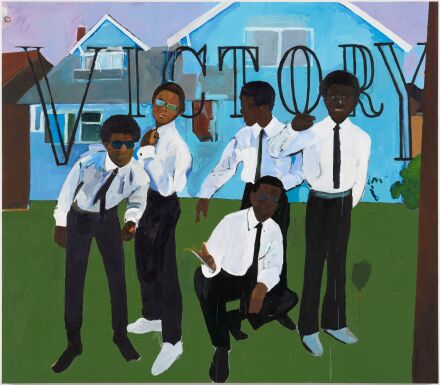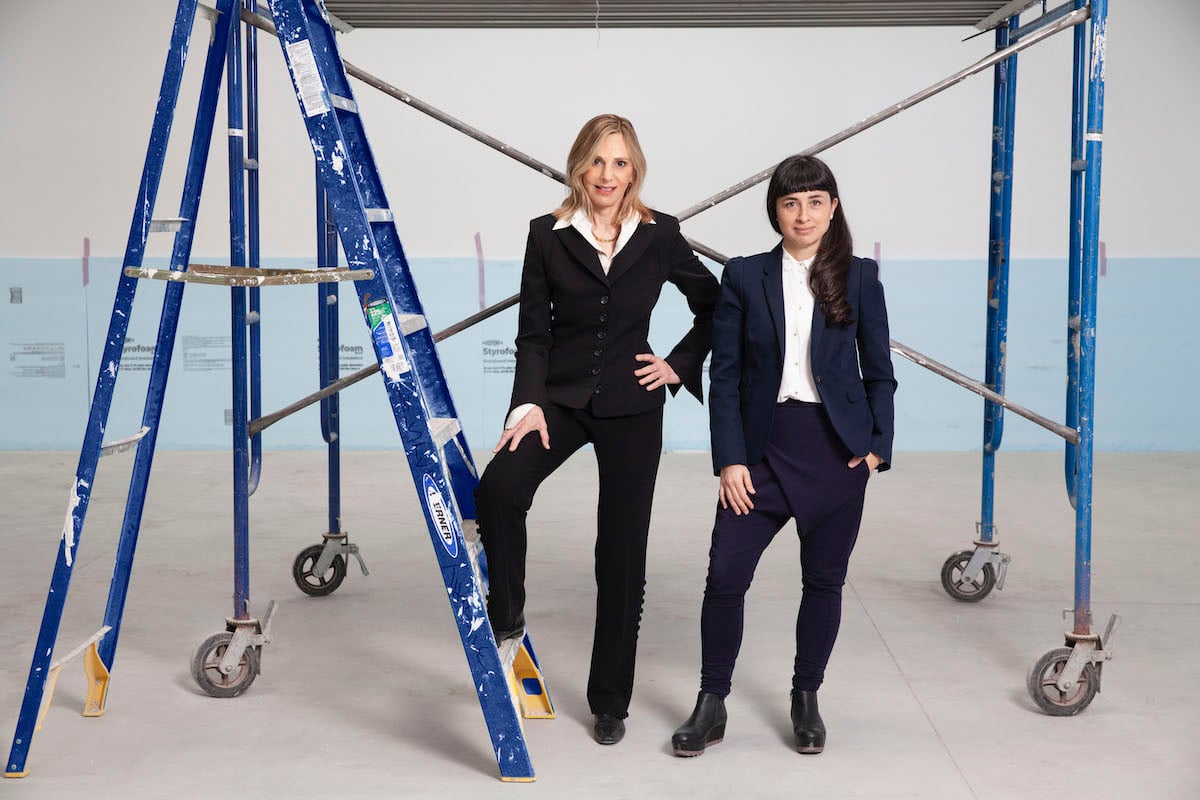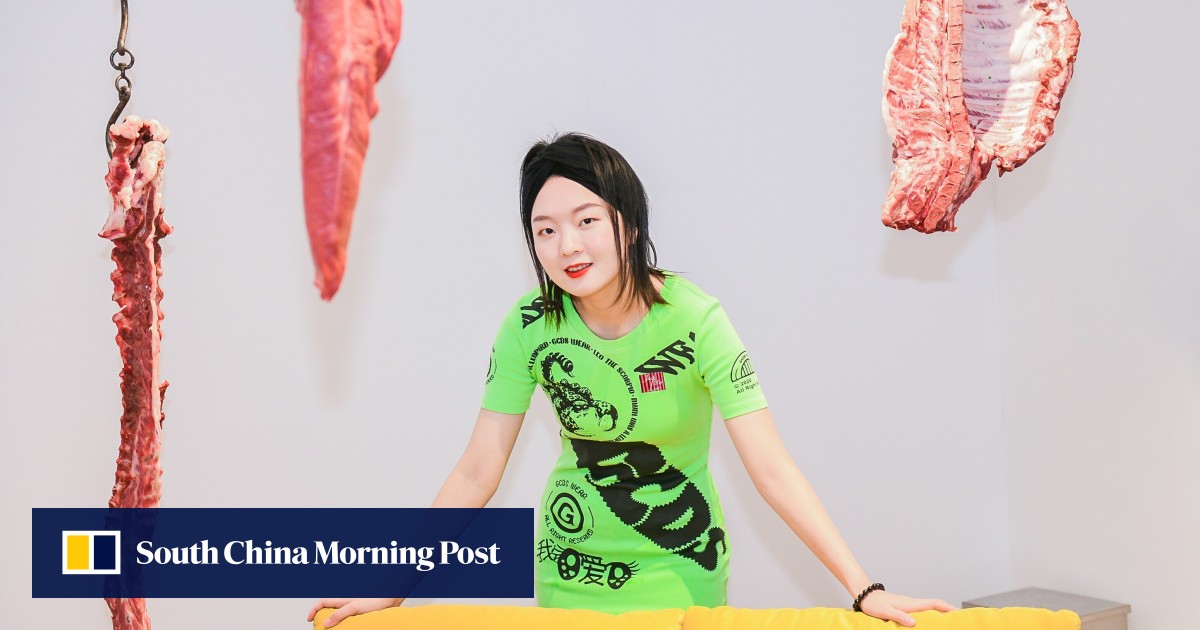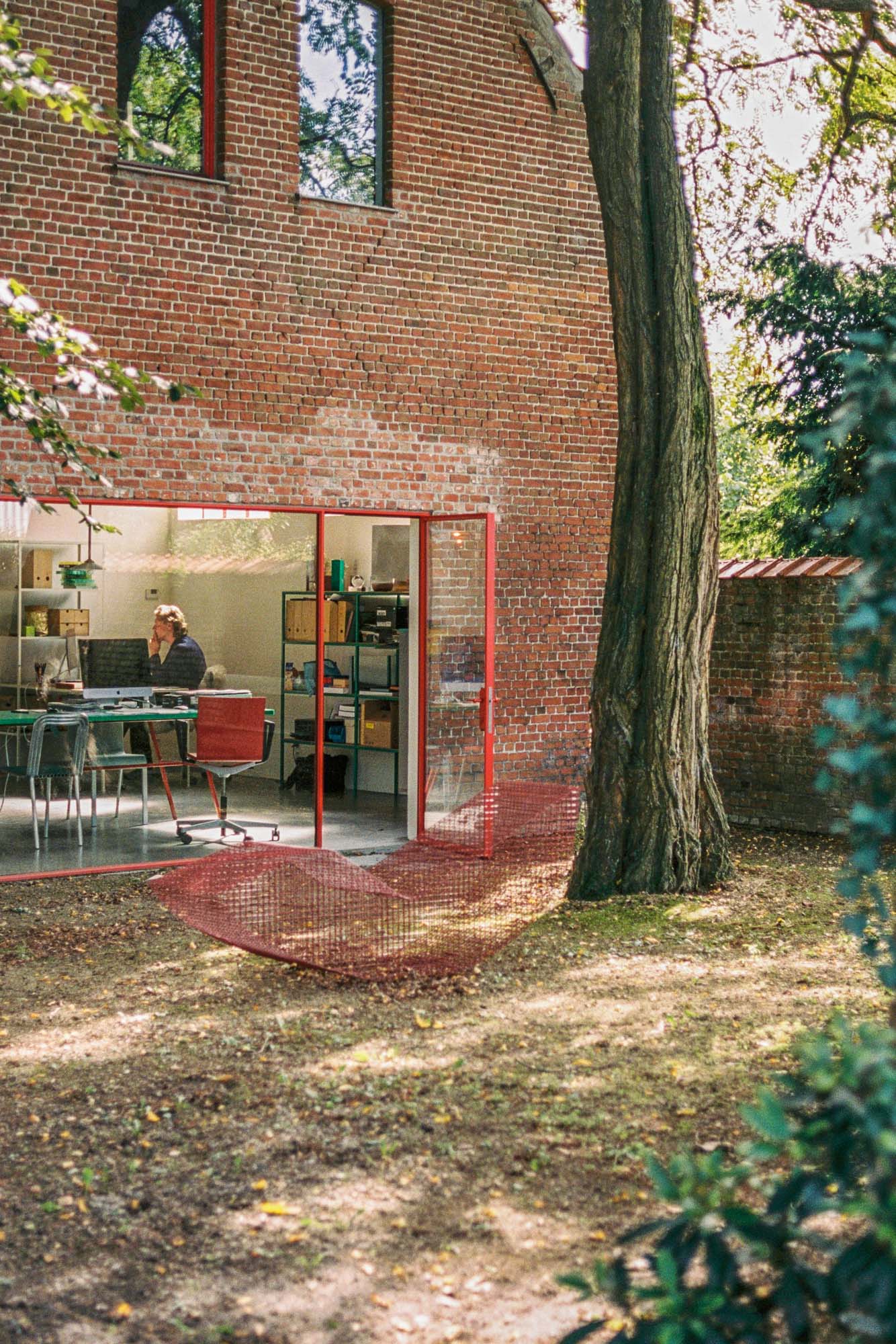Untitled: Furniture Island No. 3
2009 - Installation (Installation)
210 x 210 x 130 cm
Matthew Darbyshire
Matthew Darbyshire has made several Furniture Islands, all of which employ different objects and different color values. Furniture Island No 3 looks like a shop display tastefully arranged in complementary colours. Darbyshire’s use of colour is like that of a designer or a painter. His materials are all easily found in shops and are individually catalogued but they provide an ironic perspective on the art of the past. The green tables have the simple lines of modernist furniture, the purple cubes reference Robert Morris, the rug plays on the rotor reliefs of Duchamp as well as the target paintings of Noland, while the white plastic stool is a take on Brancusi. The work of all these artists, which was utopian in its project, has now entered culture on the most basic of levels and is found in homes throughout the western world, representing an aspirational mode of living that is plastic or ersatz. The shop displays and estate agents details that lure in prospective clients present an ordered world that is as utopian as the works of art originally referenced. On another level, however, Darbyshire paints with sculpture. The objects themselves have no use value but are used as shapes and colours to form a painterly composition, a three-dimensional painting. In this regard Darbyshire’s work can be seen as a continuation of the tradition of sculpture initiated by Anthony Caro and the New Generation artists while also referring to the pure colour of Matisse’s paper cut outs.
Matthew Darbyshire is interested in the non-specificity of today’s design language. Parodying corporate branding and mass-produced design, Darbyshire’s installations expose the hollow realities behind urban regeneration and government arts investment in social regenerative projects. At the centre of Darbyshire’s work is the observation that certain core human concerns – among them the look and feel of the built environment, the intersection of art and the social realm, the idea of community and eve the possibility of visual pleasure – are, very often, framed in ways that are reductive, philosophically empty and serve only to further the interests of embedded power. Unusually for an artist who belongs to a generation that regularly revisits episodes form the (usually Modernist) past, Darbyshire’s focus is on what he calls the ‘mush and fug’ of contemporary Britain’s visual environment, something that in a high-wire act of chromatic and formal management he sequences into works that, while they speak eloquently of the quasyhomogeneity of much present day architecture and design, also have a resonant sculptural presence.* Matthew Darbyshire was born in Cambridge, UK, in 1977. He lives and works in London. *Tom Morton, Frieze no, 148.
Colors:
Related works sharing similar palette
» see more

© » ARTOBSERVED
Henry Taylor, I Got Brothers All Ova The World But They Forget We’re Related (2023), via Hauser & Wirth Marking its inaugural outing at its new Paris exhibition space, Hauser & Wirth looks west to the work of critically acclaimed Los Angeles artist Henry Taylor, whose major career survey arrives at the Whitney Museum of American […]...
Related artist(s) to: Matthew Darbyshire » Tom Morton, » Cyprien Gaillard, » Deceitful Moon, » Charles Avery, » Elizabeth Price, » Haroon Mirza, » Olivia Plender, » Sarah Lucas, » David Noonan, » Hayward Touring
» see more

© » KADIST
Charles Avery
2012Since 2005, Charles Avery has devoted his practice to the perpetual description of a fictional island...
Related works found in the same semantic group
» see more

© » IGNANT
A Visit To Studio Hanne Willmann: Clean Design That Evokes Emotions - IGNANT Name Studio Hanne WIllmann Images Clemens Poloczek Words Marie-Louise Schmidlin For Berlin-based product designer Hanne Willmann , one of the essential functions of furniture is to create an emotional response in its users...







